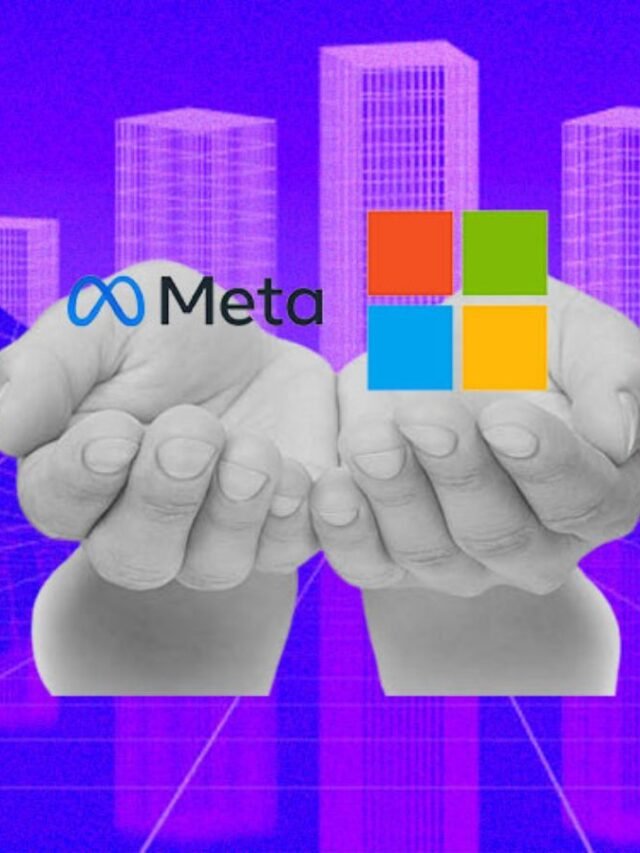Recent developments in artificial intelligence (AI) have spurred interest and opened doors for revolutionary transformation in a number of industries. The cooperation between Meta and Microsoft to release Llama 2, an open-source AI model, was unveiled today at Microsoft Inspire. The goal of Llama 2 is to enable organizations and developers to create generative AI-powered products and experiences. The collaboration between Meta and Microsoft demonstrates their dedication to democratizing AI and opening it up to a larger audience. Llama 2 is poised to challenge the dominance of other AI models like ChatGPT and Bard created by OpenAI and Google thanks to Meta’s open methodology.
Also Read: Meta Launches Threads: A Twitter Rival for Positive and Creative Conversations
Table of Contents
Llama 2 on Azure: Democratizing AI
By quickly and securely tuning and deploying the 7B, 13B, and 70B-parameter models on Microsoft Azure, Azure clients can now take advantage of Llama 2’s capability. Azure gives developers a selection of models to build upon and is renowned for adopting frontier and open models. Llama 2 is also designed to run locally on Windows, allowing for easy integration with Windows-based programs.

Meta and Microsoft: A Growing Partnership
In the area of AI, Meta, and Microsoft have long been collaborators. They began working together by integrating PyTorch and ONNX Runtime to improve the development experience for PyTorch on Azure. The deliberate selection of Azure by Meta as its cloud service provider strengthens their collaboration. Their relationship has grown with the introduction of Llama 2, which highlights Microsoft’s status as a top supercomputing platform for AI.
Azure AI Model Catalog and Windows Availability
Llama 2 is the latest addition to the expanding catalog of pre-made big AI models available in Azure. This catalog makes it possible for developers and machine learning experts to find, assess, personalize, and deploy AI models at scale. It simplifies the process of operationalizing Llama by doing away with the requirement for handling infrastructure dependency management. Additionally, Windows is the best platform for AI development because Windows developers have access to Llama through Windows Subsystem for Linux, Windows Terminal, Microsoft Visual Studio, and VS Code.

Responsible AI with Azure
Microsoft is firmly committed to ethical AI principles. Azure offers strong capabilities for inference, training, and fine-tuning, ensuring that AI models are created and used properly. By adding an additional layer of security, Azure AI Content Safety improves the security of AI apps and makes sure that consumers have a safer online experience. For Llama installations, a thorough safety framework is offered by Microsoft’s safety strategy and Meta’s safety methods.
Open-Source Innovation and Benefits
The decision by Meta to make Llama 2 an open-source model encourages openness, accessibility, and creativity. More developers can expand upon the technology thanks to open-source models, which promote quick advancements. Llama 2’s accessibility to businesses and researchers encourages experimentation, creativity, and teamwork. Additionally, it allows for stress testing and group learning, which strengthens and secures the model.
Meta’s Llama2: A Disruptive Force
To established competitors in the market for generative AI software, including OpenAI and Google, the commercial release of Llama 2 represents a substantial challenge. Llama 2’s open-source nature, in contrast to proprietary models, enables users to comprehend and alter its internal workings, encouraging a sense of community-driven creativity. Llama offers competitive performance and quality on par with other top models because of its improved training on more data and human annotations.

Meta and Microsoft’s Impact
The collaboration between Meta and Microsoft goes beyond AI and touches on a number of technological and metaverse-related areas. They have demonstrated their dedication to empowering developers and companies through their cooperative work on open ecosystems, interoperable AI frameworks, and immersive experiences for work and play. The partnership intends to provide access to fundamental AI technology, encouraging innovation and assisting enterprises all across the world.
Responsible AI and Future Prospects
For Meta and Microsoft, developing and deploying AI models responsibly is still a top focus. To guarantee Llama 2’s safety, security, and moral use, red-teaming exercises, transparency schematics, responsible use manuals, and acceptable use guidelines are in place. Both businesses place a strong emphasis on engaging the community, exchanging knowledge, and working together to solve problems in the generative AI space.
Conclusion
Meta and Microsoft‘s collaboration on the release of Llama 2 signifies a major milestone in the advancement of open-source AI models. By providing free access to Llama 2, researchers, businesses, and developers can leverage its capabilities to drive innovation and solve complex problems. The open-source nature of Llama 2 fosters transparency, community collaboration, and responsible AI practices. As the world embraces Llama 2 and builds upon its foundations, the potential for transformative AI-driven experiences and advancements becomes even more promising.
Disclaimer:
AI was used to conduct research and help write parts of the article. We primarily use the Gemini model developed by Google AI. While AI-assisted in creating this content, it was reviewed and edited by a human editor to ensure accuracy, clarity, and adherence to Google's webmaster guidelines.



